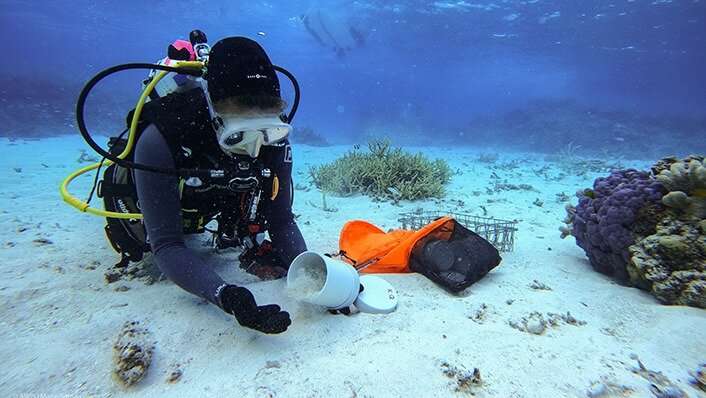This article has been reviewed according to Science X's editorial process and policies. Editors have highlighted the following attributes while ensuring the content's credibility:
fact-checked
peer-reviewed publication
proofread
New insights into coral symbiosis after bleaching

New research led by a team from the Australian Institute of Marine Science (AIMS) has uncovered a complex picture of both loss and gain within the microalgal communities of corals after the 2016 Great Barrier Reef mass coral bleaching.
Comparing the effects of accumulated heat stress across more than 1,600 symbiotic microalgal communities of corals before and after the 2016 event, the scientists found the diversity present within the environment greatly increased following mass bleaching. They also found the diversity of more heat resistant microalgal types increased in one of the three coral species studied. The study is published in the journal Science Advances.
Corals live in a symbiotic, mutually beneficial relationship with many microbes, including a diverse community of photosynthetic microalgae, which provide them with energy. When temperatures become too warm, this relationship breaks down, causing these algal symbionts to be lost from the coral animal, turning it white. This is known as coral bleaching and can lead to disease and mortality. Mass coral bleaching is widely recognized as one of the greatest threats to corals worldwide.
Led by AIMS' Dr. Kate Quigley (now at the Minderoo Foundation), the paper advances knowledge of the species-specific ability of corals to switch or shuffle algal symbionts, which can inform how they respond to increasing temperatures and assist reef management efforts under climate change.
Co-author Dr. Patrick Laffy said it was important to understand how individual corals can modify their symbiont composition in bleaching events.
"If you are trying to understand the resilience and dynamics of the reef under a warming climate and formulate management interventions, it is vital to understand the behavior of algal symbionts," he said.
"We found the heat-tolerant microalgae Durusdinium increased in abundance in the coral species Acropora millepora after bleaching, but this trend was not observed in the two other Acropora species. After bleaching, we also discovered the overall diversity of algal symbionts in some of the coral species had reduced. This new balance can have mixed consequences for how coral species grow and survive.
"In addition, we detected a more diverse pool of algal symbionts in the environment after bleaching. These are available for uptake by the young of many coral species who start off life without algal symbionts and acquire them from this pool. Coral-symbiont partnerships are a key driver of bleaching susceptibility, so understanding how the relationship can adapt is essential to predicting reef and species level vulnerability and possibly guiding interventions."
Dr. Laffy said advances in molecular and sampling technologies offer new opportunities to rapidly advance our understanding of how coral symbioses respond to the environmental changes we observe on and predict for coral reefs into the future.
More information: Kate M. Quigley et al, Symbioses are restructured by repeated mass coral bleaching, Science Advances (2022). DOI: 10.1126/sciadv.abq8349
Journal information: Science Advances
Provided by Australian Institute of Marine Science





















